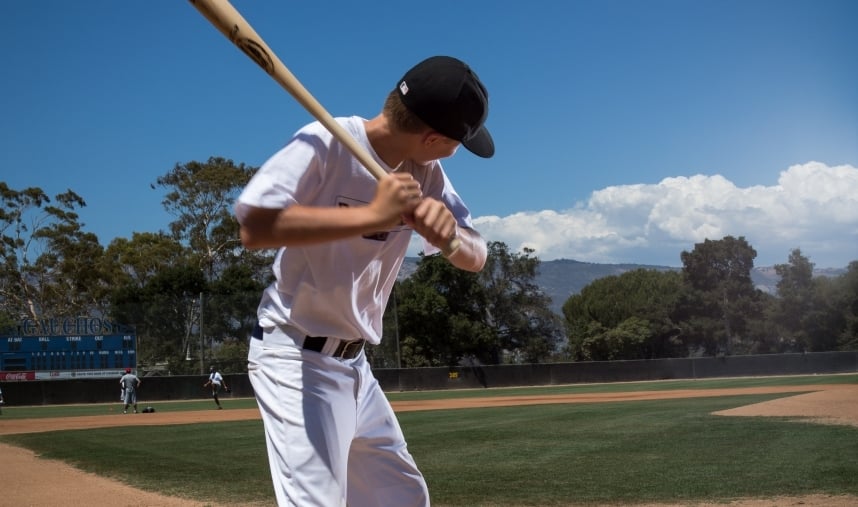Baseball Tip
Step, See, and Swing Drill

Many young hitters struggle as they learn to hit a pitched ball as they move from tee ball to coach pitch or coach pitch to player pitch. I like to think swings work from the ground up. The first thing I look for with a hitter struggling (i.e. late to contact, spinning off the ball, stepping out, looping the bat etc.) is when is the front (stride) foot landing. There is a popular axiom, “Step and swing” that is ingrained in children during tee ball that reinforces this belief. In reality, the axiom is incomplete. There are 3 basic steps to the hitting process: The stride, pitch recognition (“see”- velocity, location, type of pitch) and the swing. When a hitter is taught in tee ball to step and swing, the ball is a stationary target removing the need for recognition. The challenge is step and swing become synched together because recognition is not needed at this level. It simply throws the sequencing order off for the hitter. Instead of stride, recognize and swing, the hitter tries to recognize, then stride and swing. For the majority of hitters there is simply not enough time to do all three parts once the pitcher releases the ball.
It takes .4 seconds for a 90 mph fastball to reach the plate from the pitcher. That means a hitter has .15 seconds to decide whether or not to swing at a pitch. A hitter that waits to stride after “seeing” the ball is likely to be late to the contact point often resulting in adjusted mechanics such as stepping out, not getting weight transfer or overly dipping the back shoulder to compensate for being late getting the foot down because a hitter cannot swing until the front foot is on the ground. Once the front heel hits the ground the body works from the ground up to complete the swing finishing with the hands. The hands are the last body part that moves.
When doing tee work I generally instruct hitters to stride, pause to simulate seeing the ball, and then swing. You can do the same thing with front or side toss. I show them the ball, then drop my arm and hold for a second before I toss the ball to them. The batter is taught to stride during the pause and see the ball and then swing. This process reinforces the proper swing sequence and often helps correct common stride errors in approaching the baseball.
